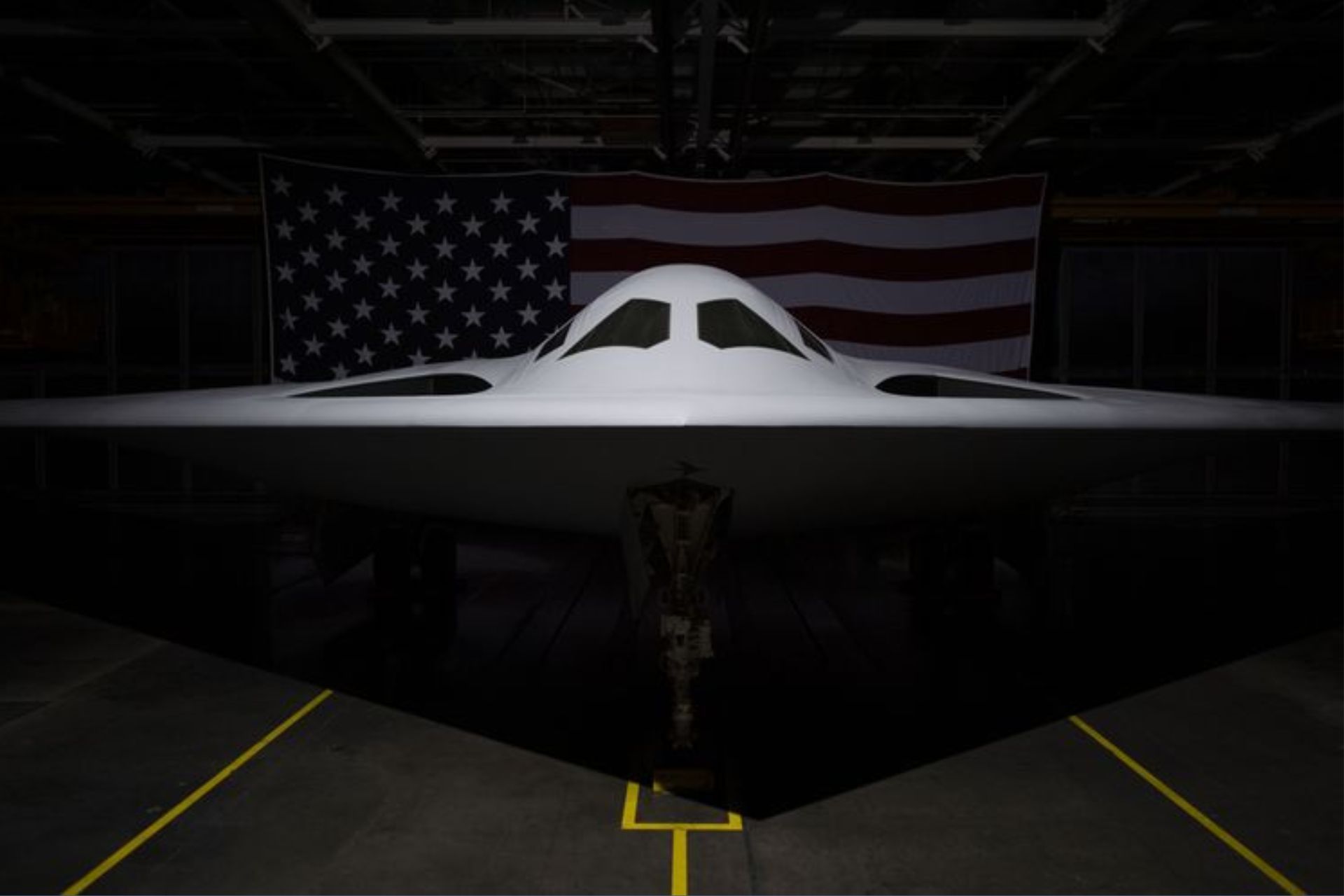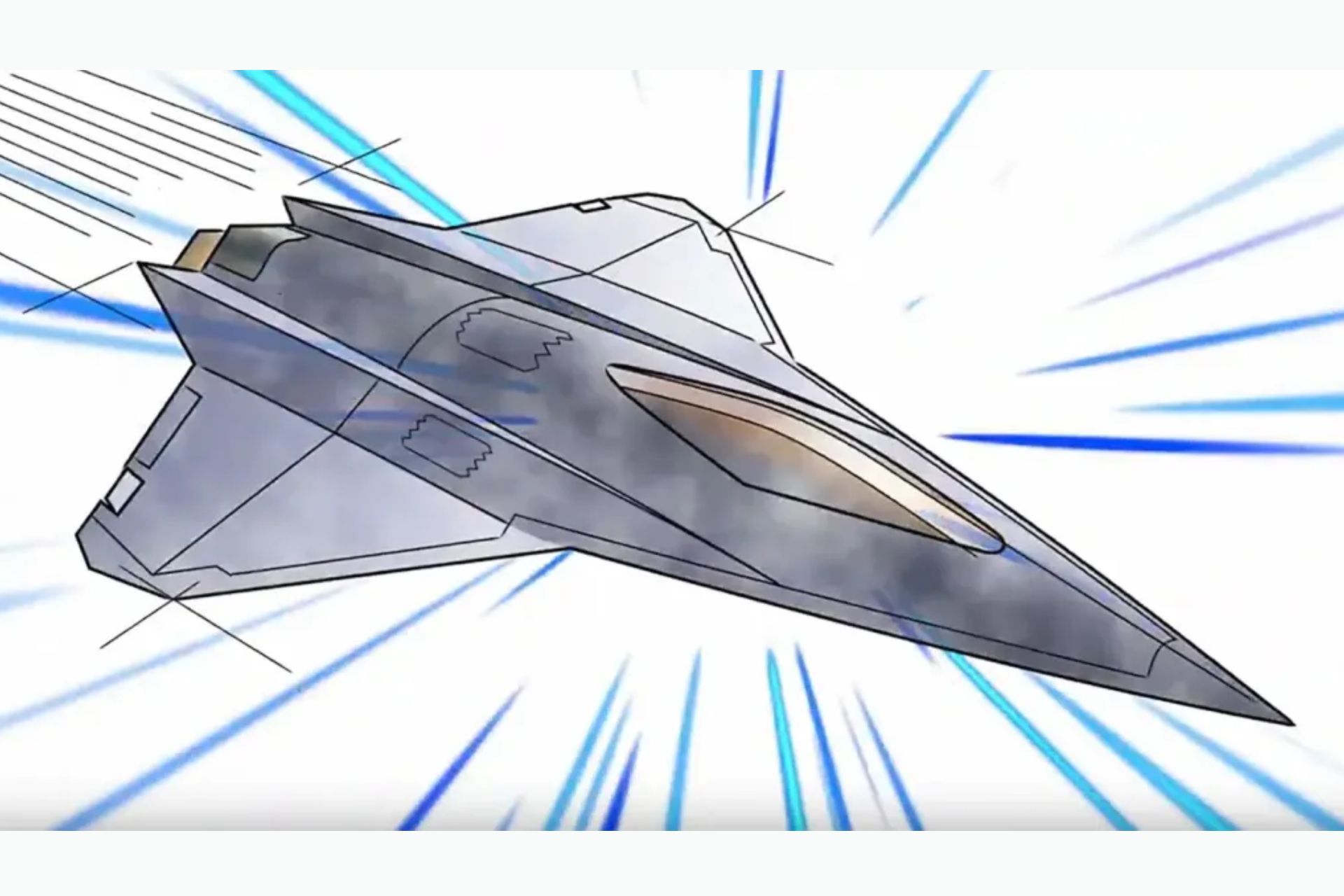Breaking News
NGAD seems to be dead : US reevaluate 6th Gen fighter jet development.
In a surprising revelation, the US Air Force (USAF) is re-evaluating its sixth-generation "Next Generation Air Dominance" program due to its high costs and the need to prioritize resources for other important programs. Recent reports have indicated that the USAF is re-evaluating the specifications of a new sixth-generation stealth fighter with a crew that it is developing as part of the broader Next Generation Air Dominance (NGAD) program.One of the main objectives is to find ways to reduce the costs of the jets, which could reach up to $250 million per unit.
Follow Army Recognition on Google News at this link

Artist view of 6th Gen fighter (Picture source: Collins Aerospace)
Reports that the United States might eventually be forced to abandon the program have generated much frenzy, especially since the United States has remained steadfast in its commitment to developing a next-generation aircraft before its adversaries.
Finally, putting an end to all speculation, USAF Secretary Frank Kendall reassured in an interview with Defense News that the service was working on creating an advanced next-generation fighter, but a redesign was necessary to control expenses and improve the integration of loyal wingman drones.
Additionally, Secretary Frank Kendall stated that to reduce costs, the Next Generation Air Dominance fighter could be equipped with a simpler and smaller engine than originally planned. He also mentioned that the concept of the Next Generation Air Dominance family of systems is very much alive.
Another major goal of the re-evaluation of the NGAD fighter program is to ensure that these aircraft will be able to cooperate with the Collaborative Combat Aircraft (CCA) drone fleets planned by the service.
It's a very costly platform. It costs about three times as much as an F-35, and we can only afford it in small quantities. It was estimated that the 6th gen NGAD jet would cost several hundred million dollars. The estimated cost of the NGAD is currently three times that of a single F-35 fighter. Given that F-35s generally cost between 80 and 100 million dollars each, the total cost of the NGAD could approach 300 million dollars per aircraft, which could limit the size of its fleet.
This revelation surprised military observers, as it is widely believed that the USAF has been secretly working for several years on a next-generation stealth fighter as part of the NGAD program. The USAF had previously suggested that it would begin receiving the latest and most advanced fighter jets by the 2030s. Two hundred NGAD fighters were initially to be delivered, but this plan now seems to be falling apart.
Trouble started to arise when USAF Chief of Staff General David Allvin hinted last month that as part of the US government's budget for 2026, military leaders would advise reorganizing, postponing, or even ending the NGAD program. Recently, the United States has abandoned several other high-stakes programs, including the AGM-183A Air-Launched Rapid Response Weapon (ARRW).
The USAF is facing challenges in staying within its 200 billion dollar budget while needing to invest in other important systems, such as the B-21 Raider bomber, which is a top priority as it prepares for potential combat with countries like China.

Northrop Grumman and the U.S. Air Force introduce the B-21 Raider, the world’s first sixth-generation aircraft. (Picture source: Northrop Grumman)
NGAD Faces Uncertainty
The NGAD has been envisioned as a "system of systems" that will include unmanned drones, manned jets, a new generation of network technologies, as well as new lethal munitions, advanced sensors, more powerful engines, an electronic warfare suite, and a battle management capability.
The USAF's hesitations regarding manned aircraft and the NGAD have also cast doubt on these capabilities in the redefined, less complex, and smaller-engined next-generation aircraft.
More importantly, the NGAD is designed to replace the F-22 Raptor as the premier operational stealth fighter and to maintain the USAF's airpower advantage against rapidly advancing air defense and technology.
The NGAD's fleet of around 200 aircraft is approximately the same as the current USAF F-22 Raptor fleet, which is slated for retirement, suggesting that the NGAD will take over. This raises questions about the future of the F-22 Raptor, which is expected to be retired by the 2030s.
David Axe, in an article for The Telegraph, stated: "This is a surprising development for advocates of American airpower. For generations, the U.S. military – not to mention the militaries of America's closest allies – has relied on the U.S. Air Force for air superiority against the most determined and sophisticated enemy, allowing ground troops and ships at sea to operate freely."
A redesign of the NGAD also makes the CCA uncertain, given that they have often been projected together in an ambitious team, with or without pilots.
It was announced that the USAF planned to purchase 1,000 CCAs specifically intended to be used in tandem with the future sixth-generation stealth aircraft and the fifth-generation F-35 Lightning II. "This figure was derived from an assumption of two CCAs for 200 NGAD platforms and two additional ones for each of the 300 F-35s, totaling 1,000," Kendall explained during a keynote speech at the Air and Space Forces Association Warfare Symposium 2023.
For its part, the USAF has maintained that the manned fighter component and highly autonomous advanced drones of the NGAD program are the fundamental pillars of its future force structure to deter and face modern threats.
"The DAF [Department of the Air Force] is moving forward with a family of systems for the next generation of air dominance," Kendall said in his speech. "This will include both an NGAD platform and the introduction of collaborative unmanned aircraft to provide affordable mass and significantly increased cost-effectiveness."
Although the future of the USAF's air superiority objectives and sixth-generation aircraft remains uncertain, Secretary Kendall asserts that the NGAD program remains stable. Despite this, experts and observers are sounding the alarm, warning that the development of a new sixth-generation stealth fighter could have broader consequences given the constant threat from adversaries.

Screenshot of what can be considered a sketch of the NGAD from Lockheed Martin's promotional video. (Picture source: YouTube/Lockheed Martin)


























